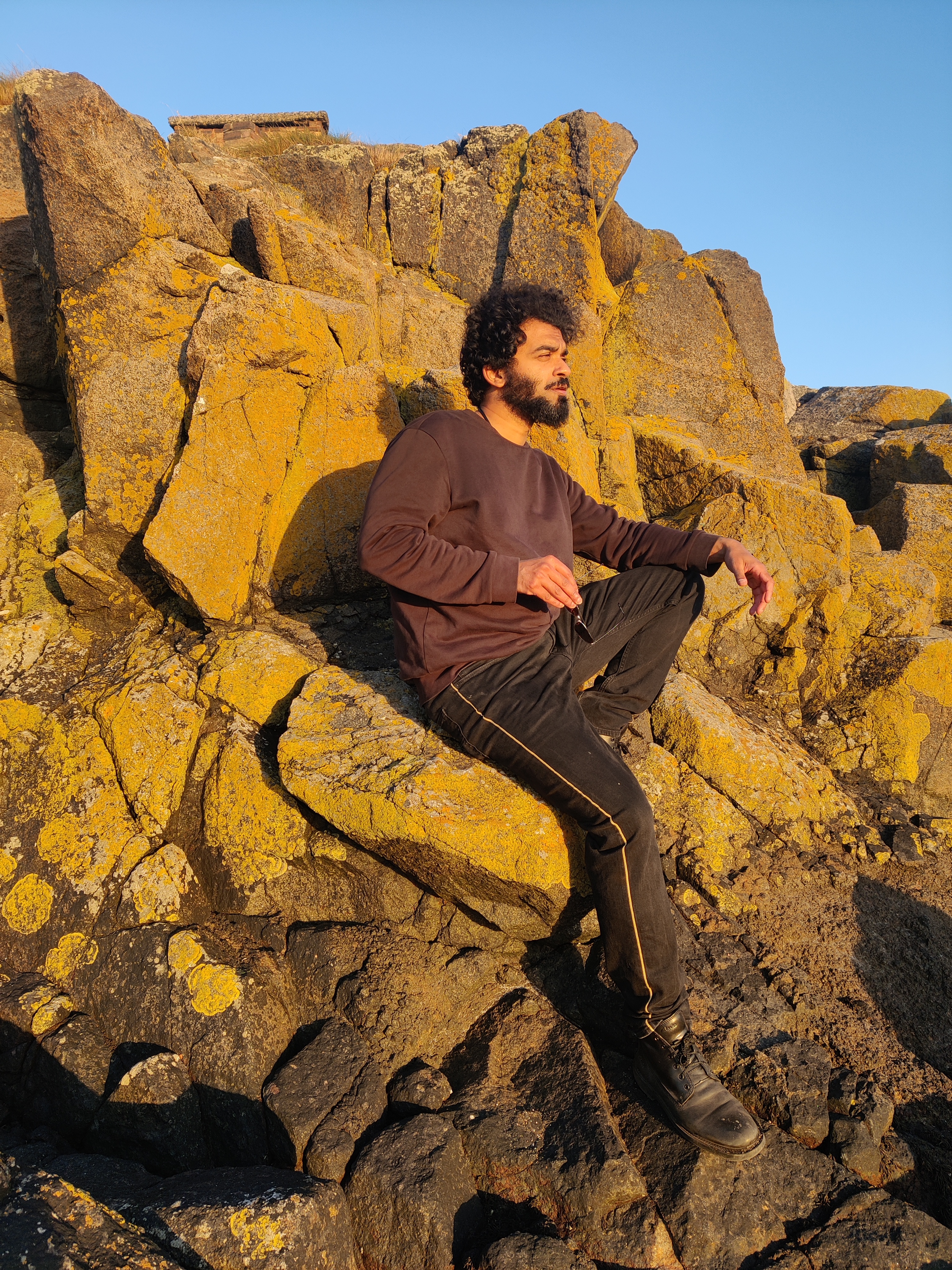
|
|
|
Hey there, I'm Fahd! I'm a PhD researcher at the University of Edinburgh. My work aims to understand how the prefrontal cortex constructs and updates internal models of the world. My research uses neuroimaging and computational approaches to theorize how the prefrontal cortex learns, predicts, and generates our experience of the world. I originally studied medicine, believing it would help me understand the brain; it mostly ended up confusing me more. I stumbled upon cognitive neuroscience through a chance encounter. Previously, I worked at the National Brain Research Center (India) and helped incorporate neuroscience into industry, consulting for companies and startups as well as running my own ventures. I also find myself immersed in other worlds such as video games. Half-Life’s continuous first-person experience and Diablo’s combinatorial strategies may feel different, but they rely on the same adaptive computations used in life. I read obscure books, watch even more obscure movies, and find obscure places to walk around. Ultimately, every good experience, movie, or game level is just another kind of model — and I just happen to study these. |
- 2025 – Talk at British Association of Cognitive Neuroscience, UK
- 2025 – Poster at Cognitive Computational Neuroscience, Netherlands
- 2025 – Talk at Edinburgh Cognitive Science Workshop, UK
- 2025 – Talk at Brain, Cognition & Development Seminar, PPLS Edinburgh
- 2024 – Talk at Human Cognitive Neuroscience Seminar, PPLS Edinburgh
- 2024 – Accepted Poster at Cognitive Computational Neuroscience, MIT (couldn’t attend due to visa)
- July 2024 – Talk at BPN Lab, Hamburg
-
July 2024 – Talk at CCC
Colloquium
–
Will to Predict: How models are created which create our world
, Budapest - 2024 – Poster at Federation of European Neurosciences, Vienna
- 2023 – Talk at Human Cognitive Neuroscience Seminar, PPLS Edinburgh
 |
March '22 - Present Pursuing a PhD in neuroscience, investigating how the prefrontal cortex constructs and updates internal models of the world using neuroimaging and computational approaches. |
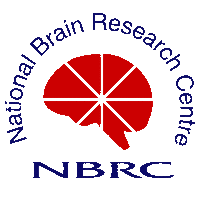 |
Jan '18 - Jul '21 Worked on incorporating neuroscience into industry and startups, as well as leading independent projects. Applied computational neuroscience methods and contributed to research and consulting initiatives. |
Fragmentation and multithreading of experience in the default-mode network
F Yazin, G Majumdar, N Bramley, P Hoffman
Nature Communications 16 (1), 8401
Emotion dynamics as hierarchical Bayesian inference in time
G Majumdar, F Yazin, A Banerjee, D Roy
Cerebral Cortex 33 (7), 3750–3772
Contextual prediction errors reorganize naturalistic episodic memories in time
F Yazin, M Das, A Banerjee, D Roy
Scientific Reports 11 (1), 12364
Aging distorts the representation of emotions by amplifying prefrontal variability
G Majumdar, F Yazin, A Banerjee, D Roy
bioRxiv, 2024.04.22.590523
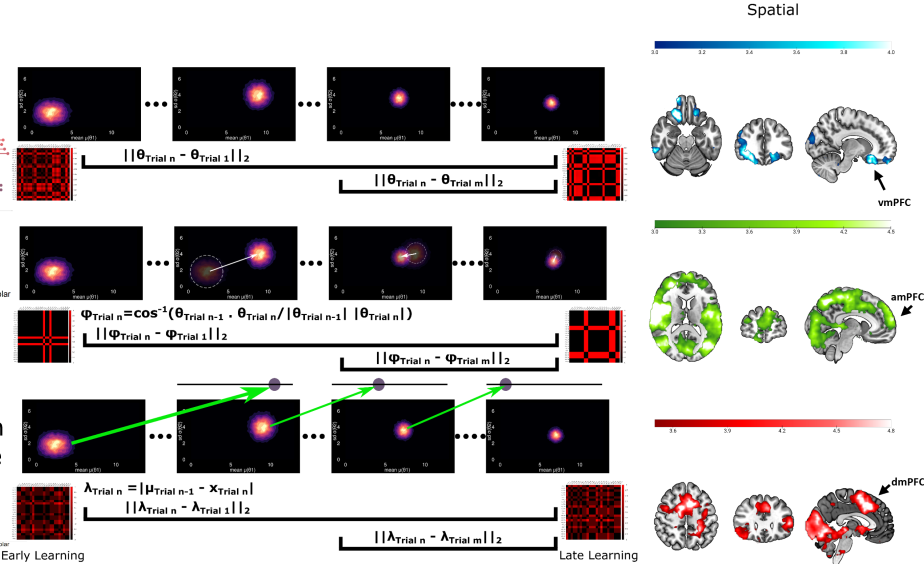 |
We found three specialized computations in the midline prefrontal cortex across its subregions while participants learned virtual worlds. These were specialized for probabilistic inference of states (vmPFC), organizing these states into orthogonal coordinate frames (amPFC), and transitioning between these (dmPFC). These computations generalized across domains (spatial, social, and sequential) and phases (learning, inference), offering a unifying account of midline PFC function across tasks and domains. |
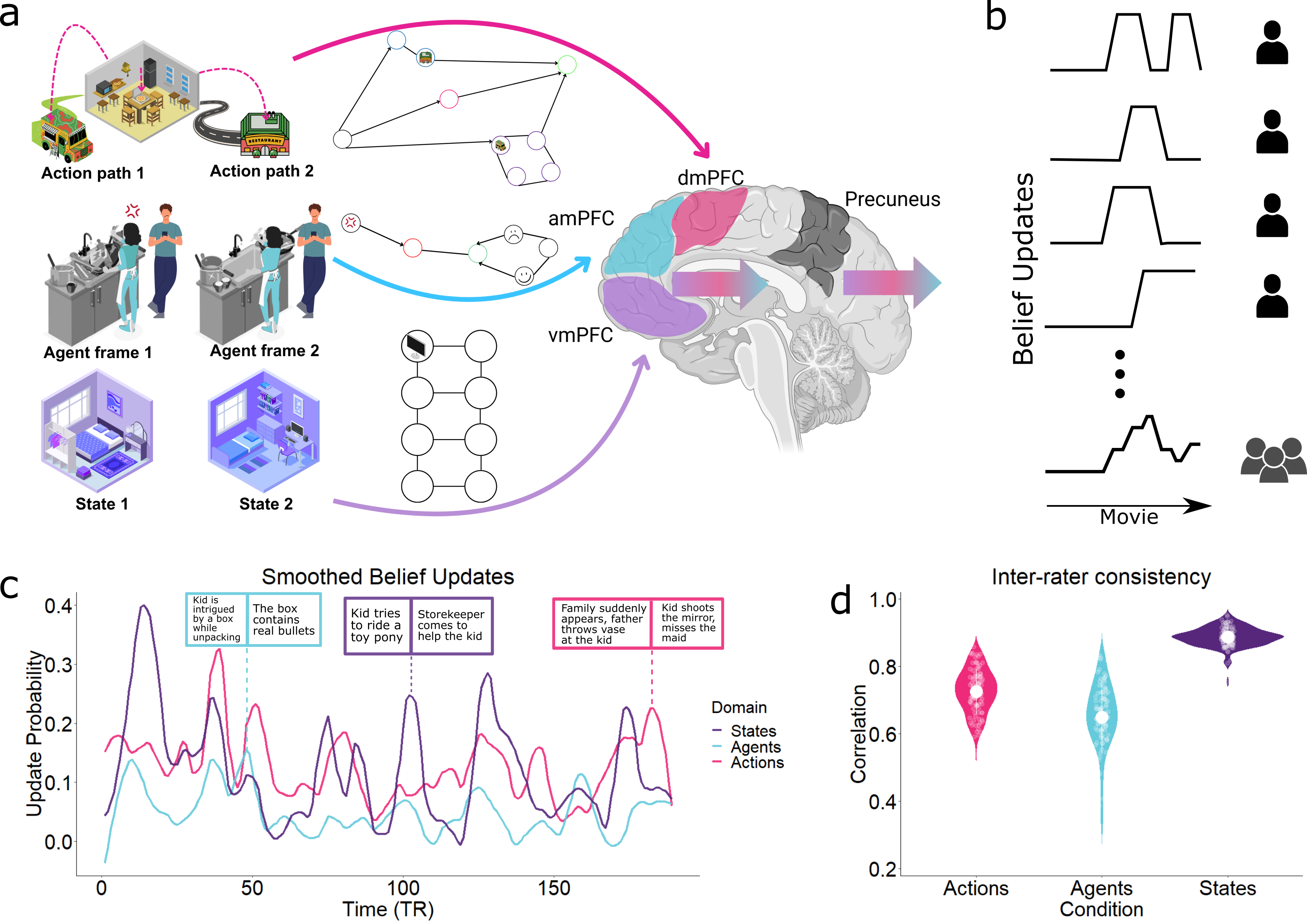 |
We found that the midline prefrontal cortex simultaneously predicts changes in context, beliefs of others, and future changes. These fragmented predictions are integrated with sensory information within the Default-Mode Network to form a unified subjective experience. The precuneus toggles between various prediction threads that best explain sensory input. People who predict and integrate similarly share more similar experiences. This work offers a framework for understanding how shared realities and individual differences in perception may arise in the human brain. |
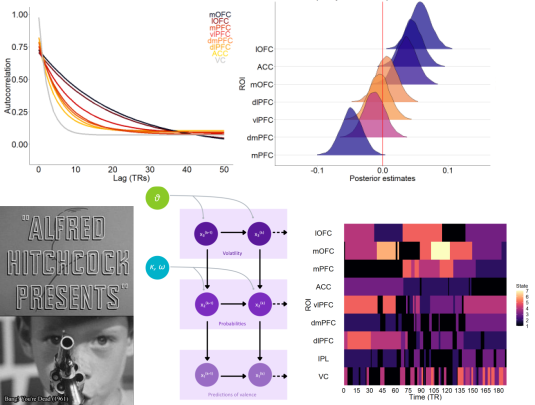 |
We found that continuous dynamics of emotions are best explained by uncertainty in one’s predictions. Using a naturalistic movie paradigm and computational modeling, we show that the lateral orbitofrontal cortex tracks the ongoing uncertainty in these predictions, and this tracking correlates with participants’ anxiety scores. This work provides a computational framework for understanding the orbitofrontal cortex in the context of anxiety disorders and its role in representing predictive uncertainty. |
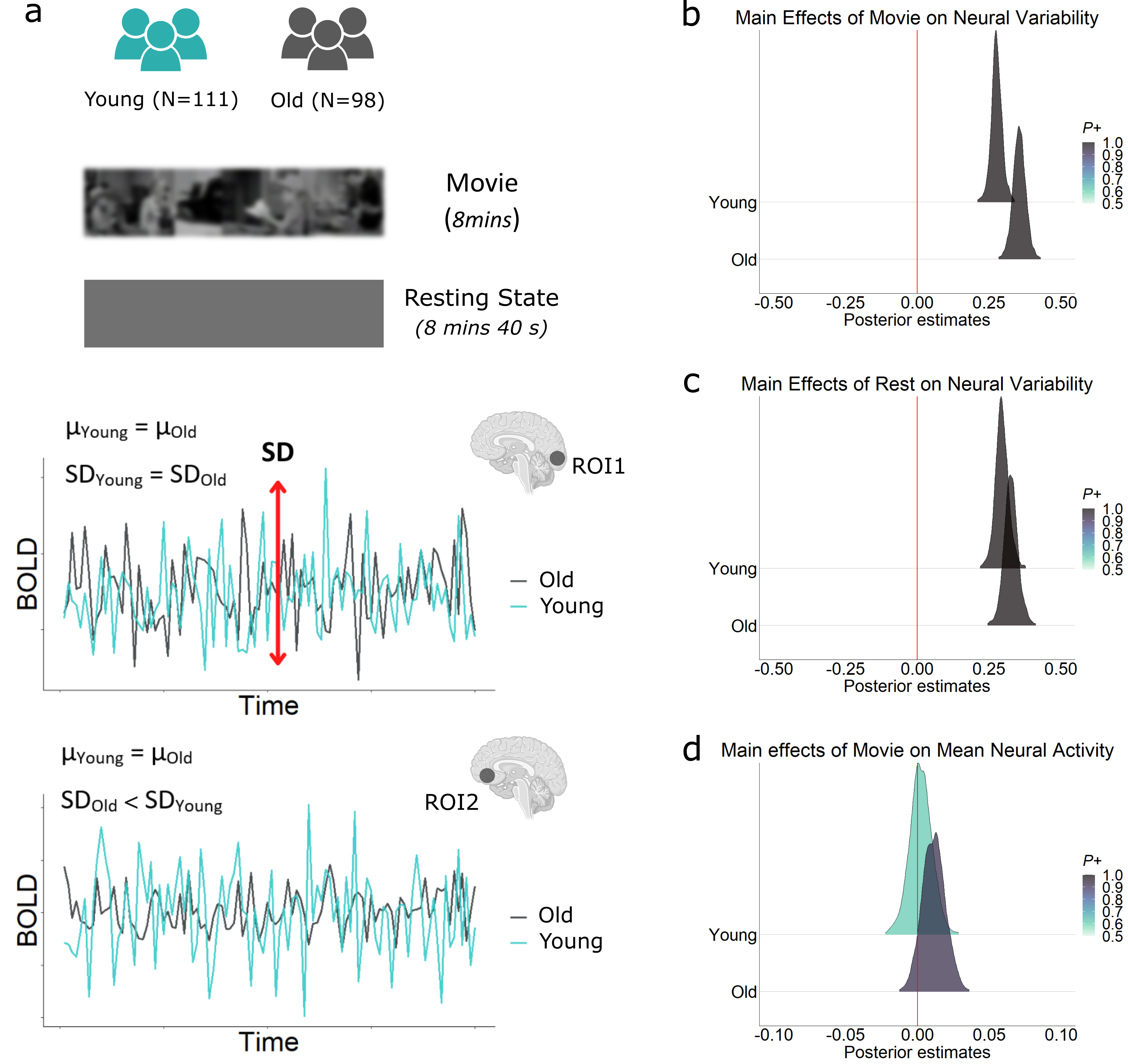 |
We found that neural variability in the orbitofrontal cortex during emotional experiences carried unique information about aging. This effect was not present in average neural responses or spontaneous variability and was specific to this prefrontal region. The latent structure of neural responses mirrored participants’ emotional experience and its alteration with age. This work provides a simple, naturalistic approach to linking neural variability to emotional processing, advancing the study of neural volatility in aging. |
|
Read full essay (PDF) |
|
Read full essay (PDF) |
|
Read full essay (PDF) |
|
Read full essay (PDF) |
|
Read full essay (PDF) |
|
Read full essay (PDF) |
|
Read full essay (PDF) |
This template is a modification of Jon Barron's website. Find the source code to my website here.